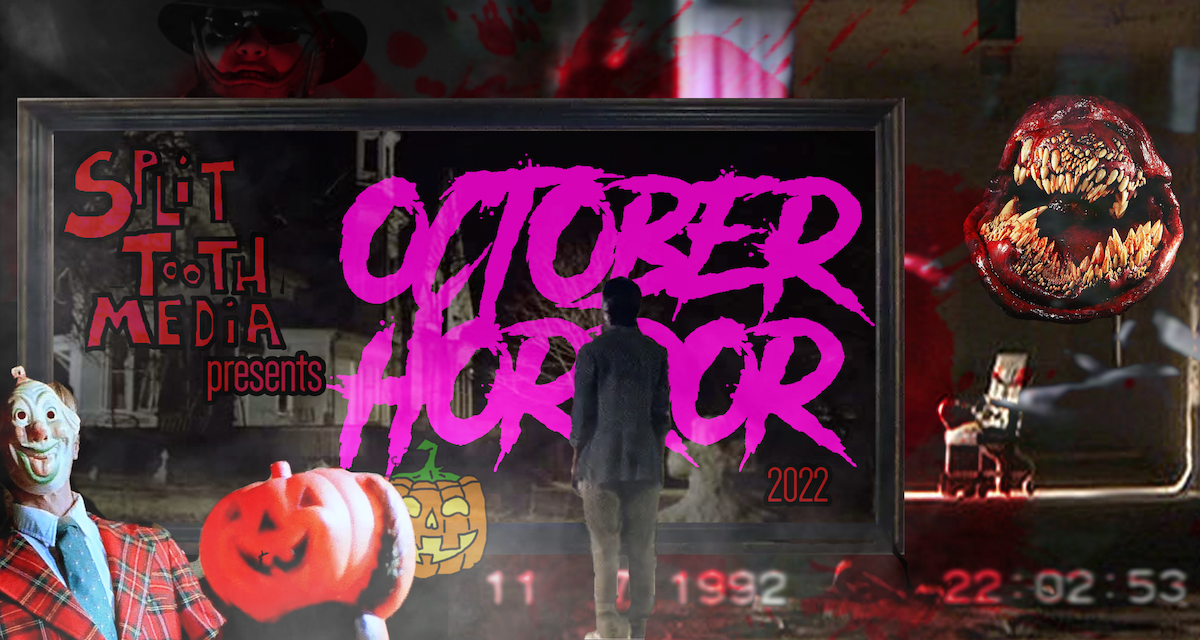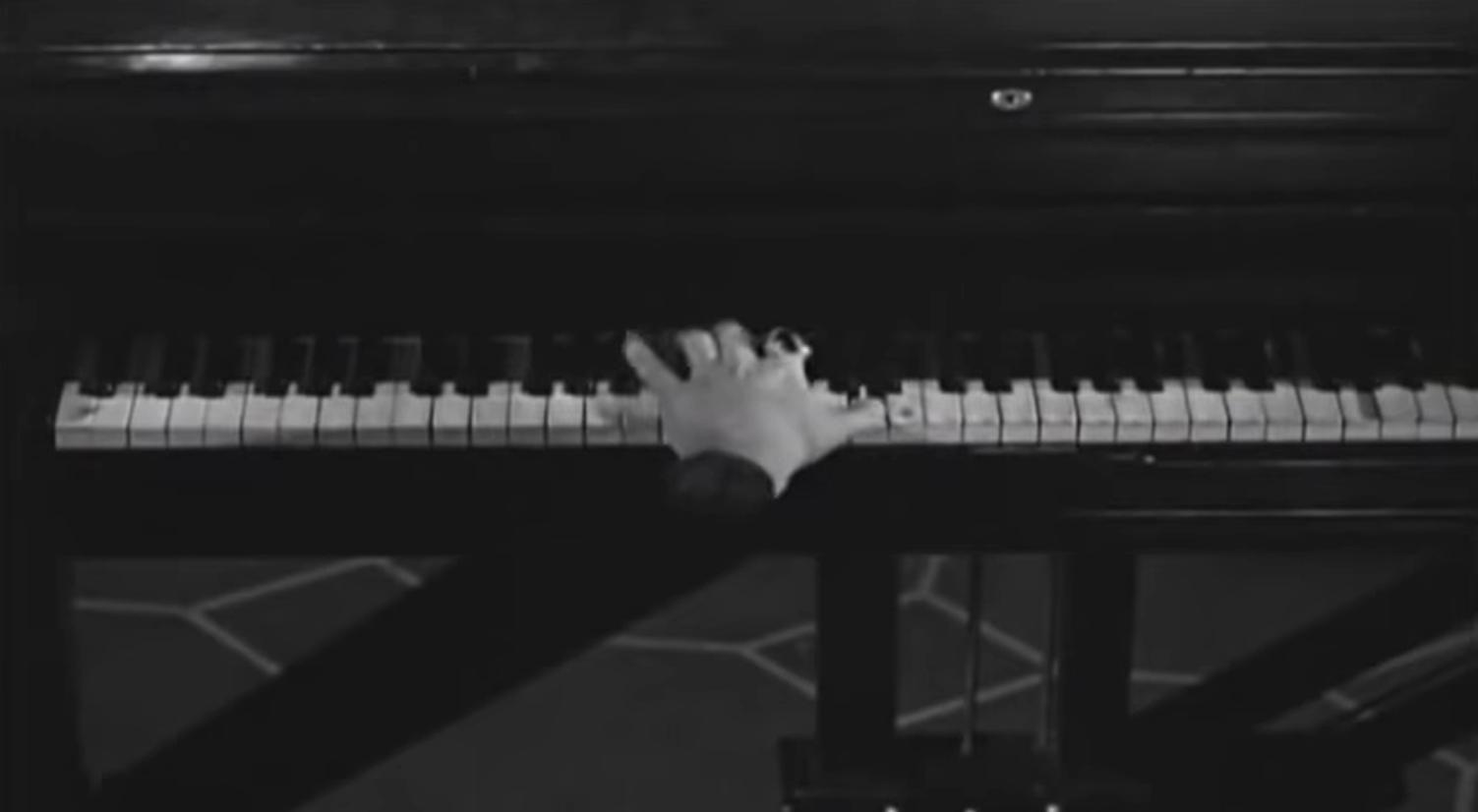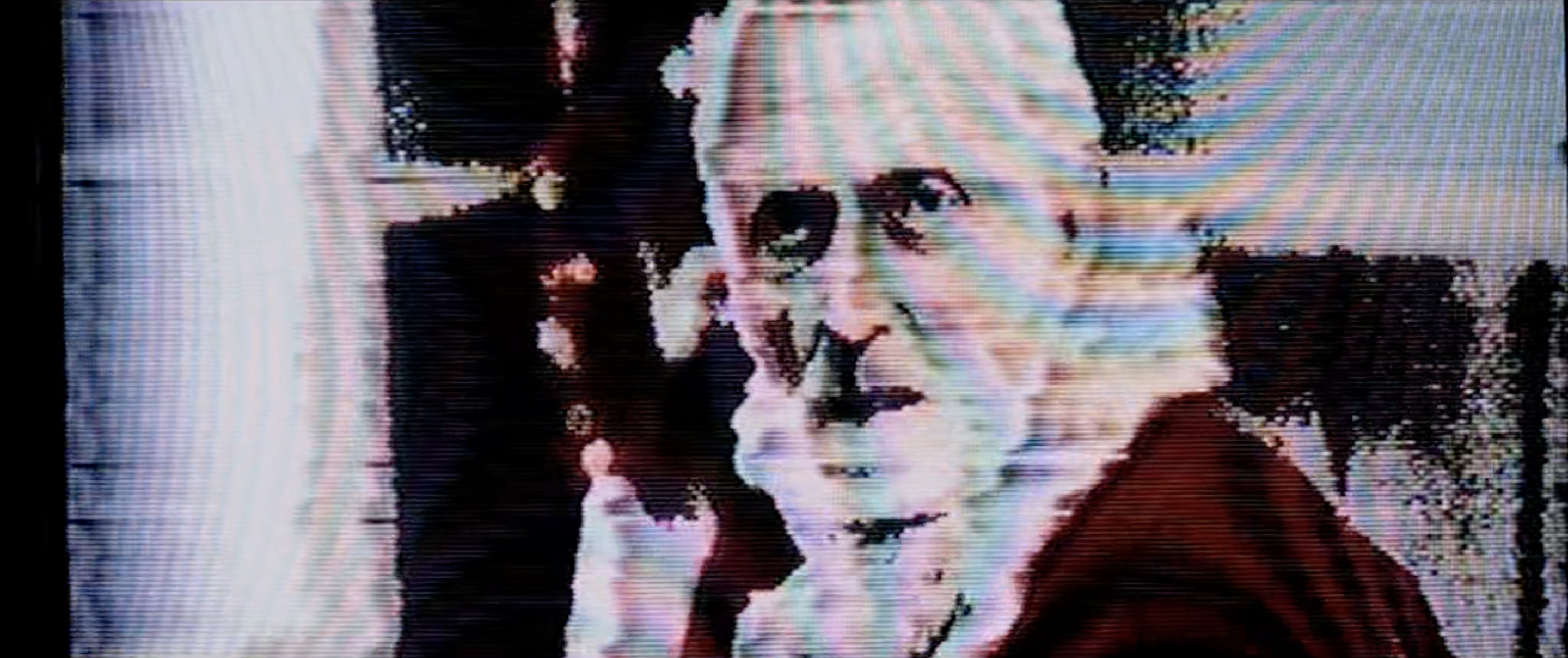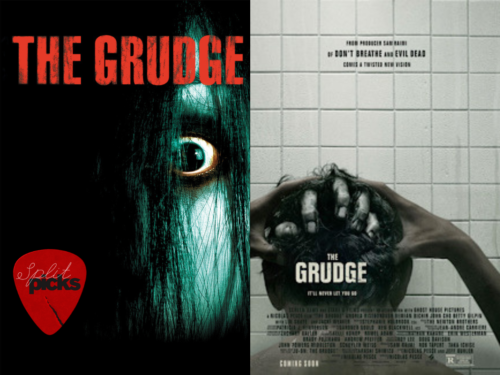Steve Collins concludes his investigation into The Hands of Orlac adaptations with a look at an “Orlac-adjacent” thriller
Lest you think making sophisticated horror films about art and the artistic process, like The Hands of Orlac (1924) or Mad Love (1935), is as simple as getting yourself a severed hand, I present to you The Beast with Five Fingers (1946). Directed by Robert Florey, another European with roots in German Expressionism, The Beast with Five Fingers is not a direct adaptation of The Hands of Orlac like Mad Love, but rather an“Orlac adjacent” addition to the canon of disfigured artists. The film features a cruel, one-armed pianist in a wheelchair at its center, named Francis (Victor Francen). He is rich, lives in an Italian gothic castle, and has a circle of employees around to assist him. One is Conrad (Robert Alda), a frustrated composer and conman who earns his keep by writing one-handed music for Francis. Another is Julie (Andrea King), a nurse/muse controlled by Francis. And then there’s the castle’s live-in librarian, Hilary (Peter Lorre yet again), an obsessive student of astrology and spiritualism who keeps track of Francis’ books.
If the locus of the conflict in The Hands of Orlac is the potentially evil hands, and in Mad Love it’s the wax sculpture of the evil doctor’s beloved actress, in The Beast with Five Fingers, it’s the will for the wealthy artist’s estate. Nestled around Francis is a system of opportunists. All these relationships with the artist are transactional, and you’d feel bad for him if he wasn’t horribly abusing Julie, the only person in the film with any kindness. Beast presents a horror portrait of a support network. The artist on film is often a severely out of balance character, always figuratively in pieces (but in Orlac, literally). They have a very special set of skills but are horribly deficient in most of the others required to live, and thus require a handler or handlers, similar to Dracula’s reliance on Renfield. For an artist, it takes a village, and sometimes the artist kills the village. There’s potential here in Beast with Five Fingers to be a film about the dangers of an artist cut off from the world, surrounded by sycophants, and folding in on himself. The setup suggests this, but the body of the film doesn’t follow through. Instead, we get a model of incoherence with a lot of shots of a ghostly severed hand, proving how easy it can be for a filmmaker to lose their way telling a story about the mysteries of art.
In horror movies, all pianists seem to use the same realtor and end up with Dracula’s castle. When we first meet Francis, he is in a sparse, spacious living room with a grand piano at its center, not unlike those seen in the earlier Orlac films. There’s a giant stone fireplace, marble statues, and a majestic staircase leading to a second-floor mezzanine, all cloaked in shadow. Certainly, the gothic castle allows the extreme depths of space to stand in for the inner chambers of an artist’s angst. On the piano bench, Julie sits stiff like a forced audience member beside Francis as he plays — her rigid posture forming a visual match with the statues to the rear. From wide and above, the camera follows the source of the music and moves toward Francis at the piano, revealing he’s in a wheelchair and playing with one hand. He’s styled and dressed like Beethoven, that same frill-necked shirt and swoop of hair. We have — an artist!
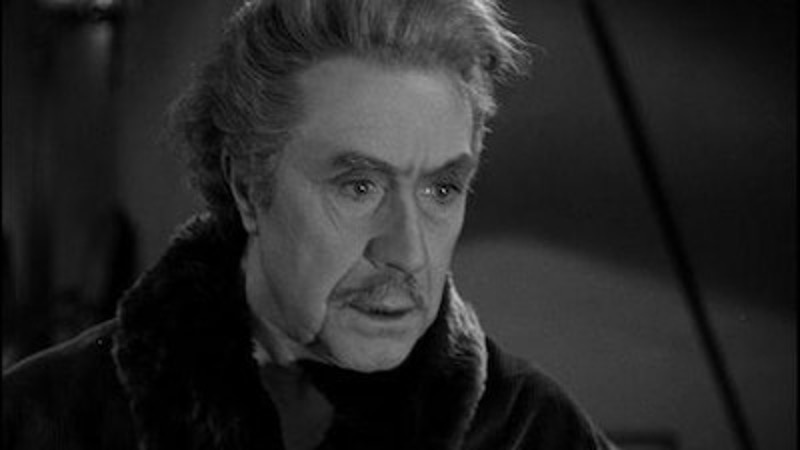
But through the arrangement of how this private concert is presented on screen, the story and a deeper mystery entwine into their own kind of music. The movement of the camera compels us to ask, ‘who is this mad one-handed pianist and his captive audience member?’ As the camera draws us closer, the additional visual information relating Francis’ handicap and Julie’s resistance feeds our understanding of the pain at the music’s source. The Beast with Five Fingers starts to falter quickly, but within this one shot is a strong basis for how a film about an artist might combine story with a less-narrative form like classical music to deepen the effect of both.
The reason a tawdry horror film might be more successful at translating the artistic struggle than a prestigious biopic is that the actual observed facts of an artist’s life are rarely as operatic as the inner world that comes out in the art they create. Realism can be a real drag when you’re trying to depict something that has no bounds and cannot be seen. A camera swooping down from a gothic castle’s ceiling onto a one-armed pianist may get you better results. The melodrama of Beast continues with close-ups of Francis pounding away on the keys, utterly absorbed, and nurse/muse Julie locked to his side, utterly unmoved. It’s a sequence of art presented by an artist and rejected by their audience. In turn, this forces the artist to dive deeper into the music. Francis’ single hand makes him play more powerfully with what he has — like when you constrict the opening of a hose, the water comes out with greater force. But what comes out of Francis is pure rage, and the depiction of this performance as a hostage situation suggests it’s not the good kind of rebel anger we see in punk, metal, and Beethoven. It’s that other, scarier version. As history taught us, if you push that temperamental art student just one rejection too far, you’ve got a potential Hitler on your hands.
Conrad enters the room telling Francis that he plays masterfully with one hand. “The tonal quality, the prodigious technique, you have suffered no loss and the world has gained a new miracle.” Because this performance was shaped for us through Julie’s discomfort, it does not feel like “a miracle.” We are set up to see the con. (We have also met Conrad before this, tricking tourists into buying fake artifacts on the street.) Next we meet Peter Lorre’s Hilary, the librarian. Hilary is obsessed with discovering how we can foretell our fate and feels he’s one all-nighter in the stacks away from an answer. It’s another vulnerable and unstable performance from Lorre; Hilary’s sort of like a seventh-year graduate student who won’t turn in his library card. When Hilary finds out that Conrad aims to take Julie away from Francis, he fears that without her acting as the pianist’s muse, his boss will start to interfere with his research. The pursuit of the unknown through the Dewey Decimal System is not a particularly cinematic process, which may be why the “obsessive librarian astrologer” character does not appear often in cinema. In this case, it adds an aura of the supernatural over the events. Unfortunately, Beast mostly leaves its supernatural elements in a distracting fog within the narrative.
What is initially established in Beast with Five Fingers is a drama about the soil an artist sits in. If it’s full of insincerity, does the insincerity pass through to the flower of the art? The film could be building into a drama of the artists’ horrific entourage. At dinner, Francis asks them all to sign a statement testifying that he is not insane before he changes his will. Despite this usually being a sure sign someone’s about to do something insane, they all comply. Francis then has them join him in the front room to serve as his audience as he plays. The camera drifts up and out from the piano to reveal them all frozen in his orbit. It’s a portrait of sycophants entrapped by the artist — the bookend to the introduction of Julie stuck uncomfortably at Francis’ side. It’s one of the film’s most effective images: weakness locked around a powerful figure. This is the movie that could be: buzzards circling around an ailing artist. The problem is that the characters and their collective weaknesses don’t really develop into anything. Conrad, a failed artist, wants the love of Julie, but can’t give up the free-ride; Julie wants out of her indentured servitude, but presumably needs the work or has a doormat complex; Hilary wants to be up in his library forever, but needs to balance his obsession with a real job. It’s OK if it’s not a movie about art, but what is it about then?
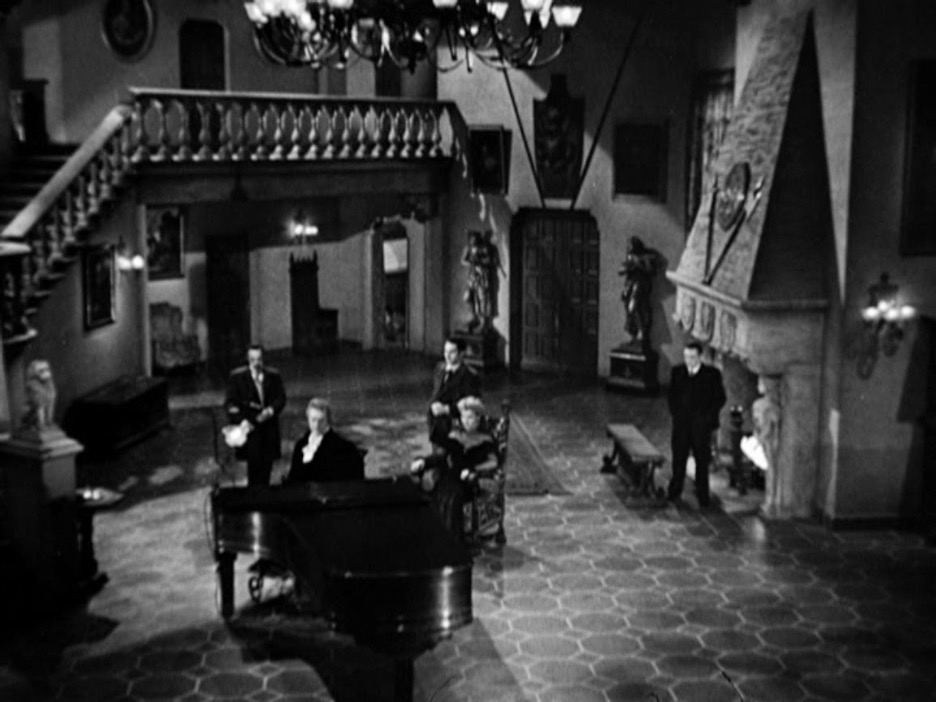
Following Francis’ performance for his entourage, a new narrative opportunity arises which the film, yet again, fails to truly capitalize on. In the middle of a thunderstorm, Francis wakes to see Julie gone from her bedside post. He shouts for her to no avail and pulls himself into his wheelchair. In a fevered state he rolls out onto the second-floor mezzanine. Francis looks to his piano below, which we see through his wobbly POV. He screams Julie’s name and moves toward the stairs, which are equally blurry and out of sorts. In this mad haze he topples down the stairs to his death. Now, this could be a great ending for a movie about an artist who destroys himself in search of his lost muse. In Francis’ vision of his blurry piano, there is a piece of a much better film here: an Orlac-like artist disfigured, losing his sense of self without his art once his love and inspiration has disappeared. The problem with Beast is that the artist is dead now and we are barely a third into the movie. What’s to be done now?
Enter “the ghost.” The night after the announcement of the will — which states that Francis gave all his money to Julie — the mausoleum containing Francis’ body is broken into. His playing hand has been severed and removed! Or wait… the window is broken from the inside… Has the hand escaped on its own? Yes, there appears to be “handprints” leading out the window and across the grounds to the main house! The hand is walking on its own! Now competitors for Francis’ estate start mysteriously dying. Who’s responsible? Is it Hillary, who may be hallucinating that the hand is following him around? Is it Francis’ relatives and legal team, who have swooped in when it’s revealed that Francis left his entire estate to Julie? Or could it be the actual ghost hand of Francis? Ovidio Castanio (J. Carrol Naish), a police detective, arrives to figure it out with a cartoonish Italian accent. It sounds fun — and it is — especially the seamless effects work on a scene of the severed hand playing the piano. But unlike its Orlac predecessors, it is not a coherent drama — about art or astrology, or much of anything.
When you make a movie about five things you get a movie about nothing — or, as a beloved mentor of mine would say, you get “a bag of doorknobs.” The Beast with Five Fingers has a piece of Mad Love in Francis’ obsession with Julie, but it lacks the earlier film’s focus on being a movie about the dangers of the arts. Like the silent 1924 version of Hands of Orlac, The Beast with Five Fingers takes a stab at being about the plight of an artist who cannot make their art. But when the artist dies at the end of the first act, the movie cannot maintain that type of narrative with only one hand. Moreover, any identification with the artist’s plight is blocked when the hand appears to be a figment of Hilary’s imagination. Art is already intangible, so to add the question of a ghost that may or may not be in Hilary’s head, adds fog on fog.
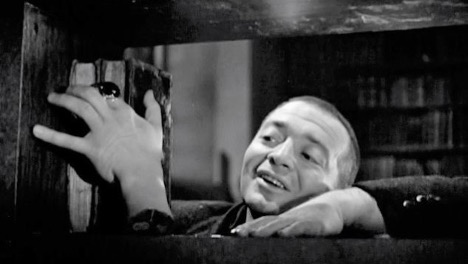
Instead of trying to make us care about the hand, which is quite a challenge, the second half of the film is committed to Hilary’s drama, of whether the ghost hand is real or in the librarian’s head. Placing an emphasis on Lorre’s ability to portray a character’s degrading psychology was successful in Mad Love, but that’s because we understood what his delusion was about. Hilary’s visions of the ghost hand are less clear in their purpose. They may be about living in the shadow of Francis, or may be about guilt from some involvement in his death. Either option creates a different meaning for the hand. Without clarification, the hand’s purpose and effect are diluted. Florey has us focused on whether or not the ghost is real without answering why it might matter to us or poor Hilary. He’s made the directorial choice of prioritizing scene-to-scene curiosity over the meaning of the whole — which, obviously, isn’t always a bad thing. It just doesn’t work to this particular film’s advantage.
This leaves the Old Dark House and who-dunnit aspects of the story to wrangle for our focus — hence the introduction of the Poirot-like Ovidio Castanio. Conforming to the Old Dark House story patterns, this becomes about plot, misdirection, and scares, which is why the rest of the movie so closely resembles a Scooby-Doo episode. The film fails to use the ghost plot to much effect. It’s certainly fun to see a hand walk around on its own, but Beast becomes a collection of attractions instead of a film. It gestures and winks at so many potentially more fascinating ideas without ever taking a bite.
The Beast with Five Fingers ends like the 1924 Orlac: With a ton of exposition, explaining which murders were committed by whom, why the hand sometimes seemed like it was in Hilary’s head, and how the hand really did haunt people on its own. But unlike Orlac, which ends with the image of the artist’s hands engulfing his lover’s face in an embrace — taunting us with the limits of what we can determine about the inner from the outer — Beast ends with the Italian detective caricature addressing the camera and saying in an exaggerated accent, “Can you imagine a hand walking around?” It’s as if the filmmakers know the jig is up — Their hand doesn’t mean squat. One of the most memorable scenes in the film — of Hilary watching the severed hand playing the piano on its own — is also one of the silliest. Compare this scene to the power of the severed hand stretching down from the ceiling towards Conrad Veidt in the original Orlac — so vividly expressing the artist’s fear of losing himself and his expressive abilities — and you see how far Beast has drifted from the promising tale it began to establish in its first act with Francis. The Beast with Five Fingers is a strange meal — ossobuco and Cheetos, art and spooky-house shenanigans, yet committed to neither — which is the film’s ultimate failure.
Purchase Beast with Five Fingers on DVD here
Stream Beast with Five Fingers on Amazon Prime
Stay up to date with all things Split Tooth Media and stream Steve Collins’ latest film, I’ve Got issues
(Split Tooth may earn a commission from purchases made through affiliate links on our site.)
Find the complete October Horror 2022 series here:
